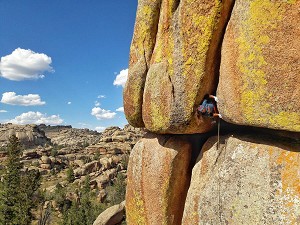
An insight into the characterful crack climbing on the Elbsandstein towers of Germany and Czechia, where knotted ropes replaces metal trad gear and bolts, and chalk is banned...
Sand crunched beneath our feet as we followed the labyrinth of narrow trails up through the Elbsandstein forest. Crushed needles and cones emitted fragrant smells of pine. Slender towers of featured sandstone rose out of the forest, piercing the sky, whilst falcons taking advantage of easy flying cruised on the thermals in a world of blue.
Our vantage point offered distant views of the wide and lazy river Elbe as it flowed through the Czech border into Germany on its way to Dresden and beyond. Steam paddlers busy with sightseers drifted with the flow, whilst huge wide-beam barges laden with cargo fought upstream against the current. The sound of gently rustling leaves was broken only by the occasional high-pitched whistle of passing trains as they rattled their way in either direction on the opposite side of the river.
The temperature had intensified over the week and now proved too much to climb in the sun; hopefully our route would be afforded some shade. Details for finding our objective were sketchy — the fact that it was a 75-metre crack created by the hand of legendary local climber Bernd Arnold was enough to keep us hungry.
On this trip I had teamed up with crack maestro Kris Schrijvers aka 'The Dutch Crusher'. Our mission: to pick off the best and most historic jamming and offwidth cracks in the area. No way we were going home without this beast!
In an area full of towers offering stunning objectives at every turn, it's easy to get pixie-led, so to cut a long story short, after much sweat and toil and a few blind alleys we rounded a corner to be struck by one of the most impressive lines I had seen in a long while...a full-on crack in the sky!
A snake of a line, weaving its way up the wall, out through a roof and soaring up into the distance, splitting the tower from bottom to top, lying in wait to spit venom and draw blood.
It looked to offer the usual uncompromising climbing, giving run-outs between fiddly knotted rope protection to keep the pulse racing, no chalk to follow, pure on-sight and requiring full commitment and self-belief in your ability; psychological meets physical in a battle of wills...'Fight or flight!'
I studied the nuances of the first pitch, which looked to be a combination of fist jamming and arm barring whilst heel-toeing with the feet, driving and locking in a vertical body pop. Parallel and hard to protect, it would require 'Kinderkopf' sized knots (Babies' heads). It had just one ring on the entire pitch, situated high on the overhanging wall just below the belay cave under the roof.
I distanced myself into a relaxed head space whilst I sorted kit. The bunch of knots that pass as protection in this area are pretty rudimentary in comparison with a UK trad rack but, as always, method and organisation are key for efficiency. Once on the sharp end, time spent faffing leaves energy wasted and focus shattered; gunfighter slick is the aim - swift, precise, hit the spot, move on.
No metal pro in the form of nuts or cams here; the rock is soft and friable. The rough, grit-like patina is misleading. It appears tough but once broken through has the consistency of compacted sugar and becomes friable. Soft knots, slings and threads are the order of the day, supplemented by the occasional solitary metal ring, which act as both runners and belays and, in accordance with the strict ethics of the area, have to be placed on lead by the first ascentionist. All routes must be led ground up, with no top-roping — ethics devised well over a hundred years ago in the name of fair play and to protect the rock, which are still adhered to.
Later, with the wildly run-out first pitch already in the bag, I shuffled strenuously rightwards undercutting the roof and pulled up into the soaring crack of the headwall.
High up on the second pitch of the tower, the steep splitter that had drawn me in and led me on with accommodating jams now turned devious as the crack pinched up into an insecure flare. Cracks were also rapidly appearing in my 'cool bluff '. Fear was bleeding through as pressure started to build...
I glanced back down a long run of rope only held in line by a couple of small knots before disappearing under the roof to my hidden belayer... isolation struck...Imagination was already playing re-runs of the long screamer and its conclusion as I ripped the feeble knots from the soft sandstone and passed the single ring belay on the free run of the rope. My internal dialogue broke out of its box, talking out loud in an attempt to keep a lid on the situation.
I fought to keep purchase in the slot with a half-torqued jam on two fingers. Humidity and the lack of chalk weren't helping...the marginal jam was slipping...the pump made itself known.
I hung in there, precariously changing position to ease the burn, swapping hands and feet like a lizard on hot sand. Eyes closed, I concentrated on controlled breathing, tuning into a moment of stillness. I honed-in on body tension and dialled it down. Rock caressed the skin with unforgiving roughness offering its gift of friction whilst at the same time beads of friable sandstone rolled underfoot spelling insecurity.
I scanned around looking for a knot placement to defuse the situation and to give me a modicum of confidence to push on, but nothing obvious was forthcoming. Narrowing my focus, I managed to find something on the fringes of acceptable: a nubbin of rough rock out left which formed a small rounded lump to accommodate what I fondly call a 'Velcro sling'.
I rested the sling on the nubbin top in the hope that it would at least hold a slump! Then out right I fed a skinny length of stiff cord through a Sanduhr (hourglass feature) formed by two small holes. With one hand I tied an overhand knot then nestled it into the back of the top hole so as not to put too much emphasis on the weak thread in the sandstone —nothing very inspiring but the situation was down to a simmer, allowing me to focus my efforts on seeing a way through the sketchy moves above.
I rocked my weight out left via small, snappy edges below the nubbin holding the sling, then with my left hand crimping behind a tiny fragile feature and my right in the flared friable jam I managed to establish the tip of my right toe higher up the crack and tweaked it in. Slowly, I drove up to straighten my knees and in a karate chop style move slapped for a jam higher in the central crack... Sinker! Another jam followed allowing me to get my feet up and, to my joy, I was gifted a solid knot placement.
Now back into a smooth rhythm, I pushed on...Nine metres higher, the eye of a rust-coloured belay ring doing its best to blend into the rough sandstone winked at me. Sanctuary! An island of safety in a sea of uncertainty…The ring rattled its reassuring sound as the screwgate embraced it. I pulled the rope and with one-handed trickery tied a clove hitch and fed it past the gate. It snapped shut with a satisfying click.
Safe! I drew a long breath, exhaled slowly, sat back on the ring and afforded myself a fat grin of satisfaction.
Dry-mouthed on the summit of the tower, we contemplated the route. The gauntlet had been laid down; the route had delivered all the ingredients I had come to expect from this uncompromising area, reaffirming my commitment to its adventurous style.... We left our mark in the ascent book and descended into the forest.
The road east
I have had an obsession with this area for over 25 years and first came across images of the Elbsandstein towers of Saxony (Germany) and Bohemia (Czechia) in an old book in the mid '90s. Black and white shots showed barefoot climbers in makeshift chest harnesses using racks of knotted rope for protection. It spun an air of mystery and danger...I was intrigued!
The area looked heavily forested, giving the impression of a setting from a 'Brothers Grimm' fairy tale with the big bad wolf lurking around every turn. The rock resembled Peak gritstone but the routes were bigger and the cracks, which were my obsession, looked stunning! I needed no more encouragement.
I made up a simple rack based on the pictures I had seen and - armed with no more information - I bought a bus ticket to Dresden and headed East across Europe on the 24-hour journey to see what it was all about. The coach journey was memorable in itself! Twenty-four hours cramped up in a confined space at the mercy of a large group of young German 'Born Again' Christians with guitars, intent on sharing unending renditions of bible songs! It was enough to turn a man to the dark side!
Thankfully, it was worth the torture and eventually we were spat out into a stunning wonderland, which until 1989 had been hidden behind the Iron Curtain. Little did I know that it was to become a life-changing trip; my climbing and my approach to it would be forever entwined with this unique area. Despite travelling world-wide in search of rock over the past 35 years, I have never found anywhere else that has left such a lasting impression.
Mind over matter
What is so captivating about this area's approach to climbing is that it levels the playing field, takes things back to basics. When climbing here, you can't help but feel a strong connection with the past, to be immersed in its history. The whole experience feels more organic, the knots feel right, more in-keeping with the nuances of the rock and the environment, more respectful, more in tune.
Nothing has been tamed by modern technology, the ethics and old style of limited protection force you to share the pioneers' experience. You stand at the base of these soaring lines and look up, like David facing Goliath, intimidated, contemplating your fate, armed only with a rack of knotted slings, no chalk to follow or dip in nervous desperation, very limited route information and a grade which rarely tells the full story. Trad with a twist! Just you and the rock. ...Primal!
Yes, nowadays we have the benefit of better ropes, harnesses and footwear, but you are experiencing what those earlier climbers and pioneers went through; climbing in the same way, requiring the same approach and commitment, manipulating soft knots into soft sandstone cracks with the end of an old stick! It doesn't get more rudimentary.
It's only once you have had the pleasure of climbing some of its routes and cross-referencing the standards of difficulty with the year of their first ascent that you can really appreciate the skill and commitment of those early pioneers.
A commitment to tradition
These ethics really appealed to my 'old school trad' approach; embracing the isolation, intimidation and uncertainty, revelling in the intense experience it leaves behind. Full immersion in the environment, exploring, finding, then experiencing the art of movement as choreographed by nature's features without first destroying the mystery and beating it into submission.
I'm not saying that the modern tactics of redpointing and headpointing etc. don't have their place, it's just part of an evolutionary process and the road to improvement, but my point is, it's not the same game when we strip away the mystery and uncertainty. When we change the ethics to accommodate desire, something fundamental is lost, the challenge is changed and with that in mind I do have to ask: is it progress, or have we just moved the goal posts?
What I find so admirable about this area is that, despite the rest of the world selling out in the name of grade pushing by any means, the sandstone areas of Saxony and Bohemia have chosen to stick with their old-school traditions and for that reason, it offers a refreshing challenge, which is rare indeed and in my opinion is all the better for it.
In the 1970s, globe-trotting American Henry Barber travelled to the area and commented:
'In all our climbing trips around the world nowhere have we come across such matchless standards. The spice of the Elbe is its poverty of protection [...] Putting any visiting aspirant climber in their place.'
Fast forward to the 2020s and nothing has changed.
In short, it's the journey, the psychology of accepting and embracing the risk, playing with your ability to offset that risk with a combination of commitment, intuition and finely-tuned skills gained from ever-evolving experience.
Working with what is offered as it's presented, learning to be at one with the movement it creates, making quick decisions in the moment, dealing with fear. Personally, I have always thrived on that uncertainty and the creativity of the onsight/ground-up approach; it accepts the challenge head-on, it offers something deeper and more indelible. When things are stripped back to basics, it is the only true gauge of what we can really climb.
For those prepared to taste the Elbe sandstone's unique style, it offers an unforgettable climbing experience. A rare treat in an ever-changing world.
Long may it remain.
- ARTICLE: The Gravity of Risk 13 Jan, 2022
- CRAG NOTES: Dunderstruck! 31 Aug, 2021
- ARTICLE: Extreme Culm - Recollections of Climbing on the Coast 21 Oct, 2020
- ARTICLE: Far and Wide - Offwidths Around the World 18 Jun, 2020
- DESTINATION GUIDE: A Masochist's Tour of Cornwall's Offwidths 2 May, 2019
- ARTICLE: Hostile Terrain - Trad Adventures in North Devon & Cornwall 23 Oct, 2018

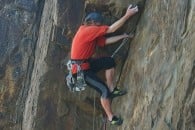

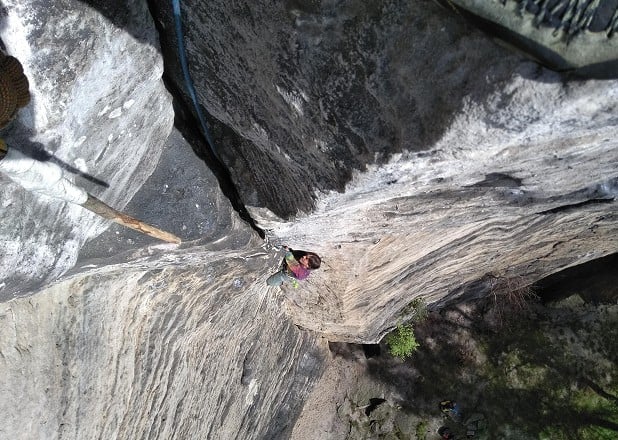
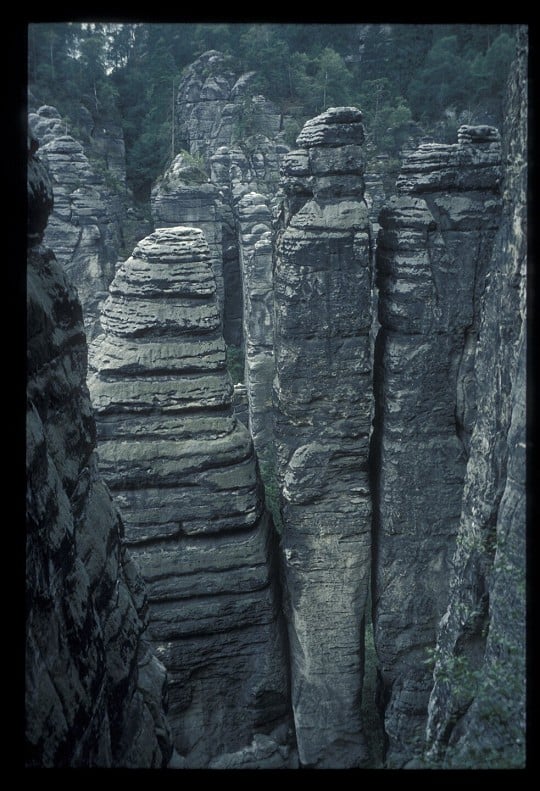

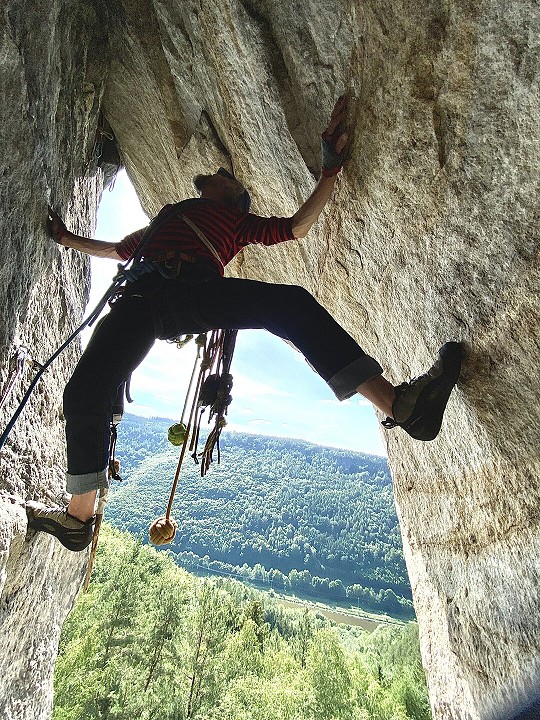
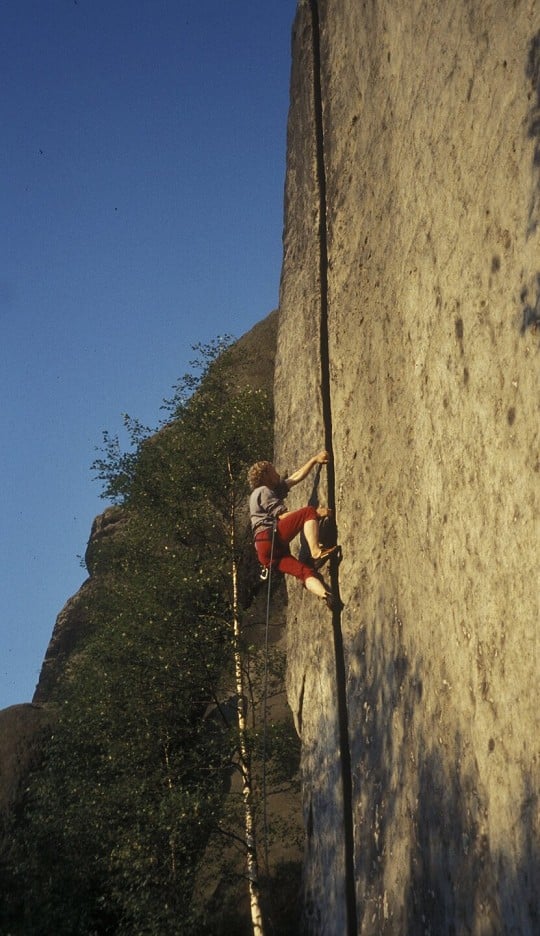
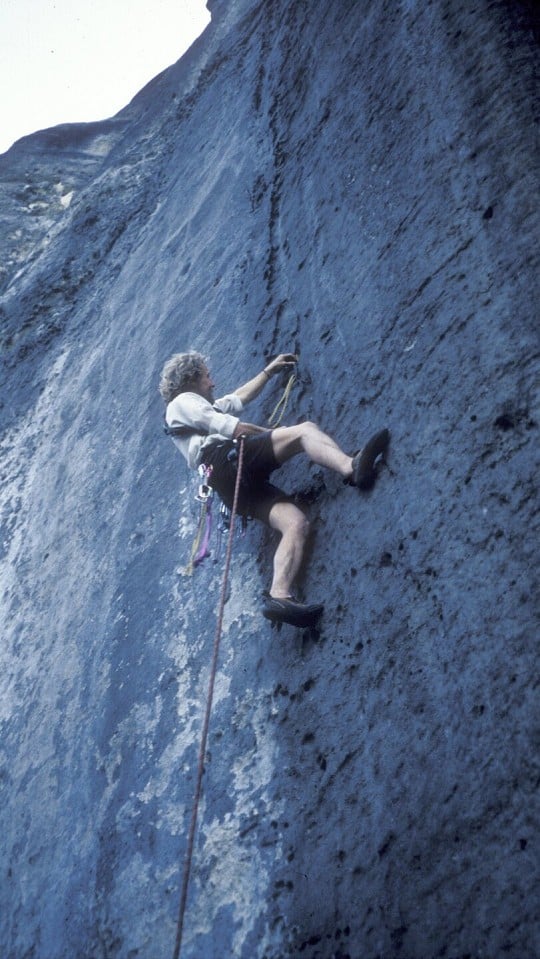


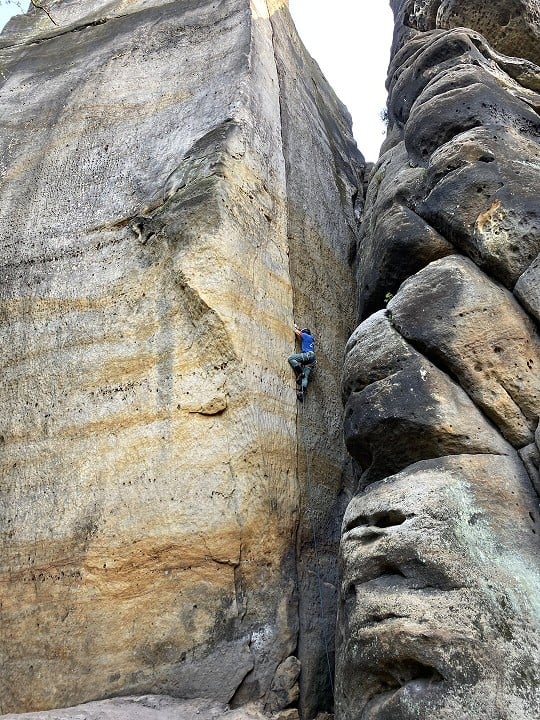
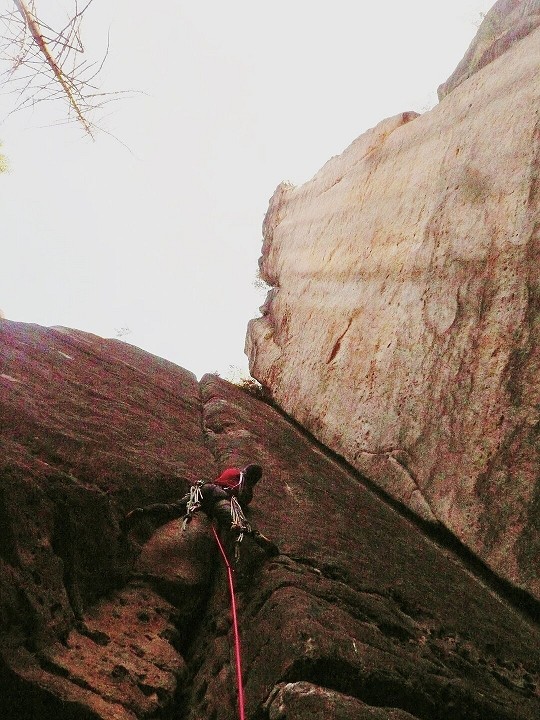
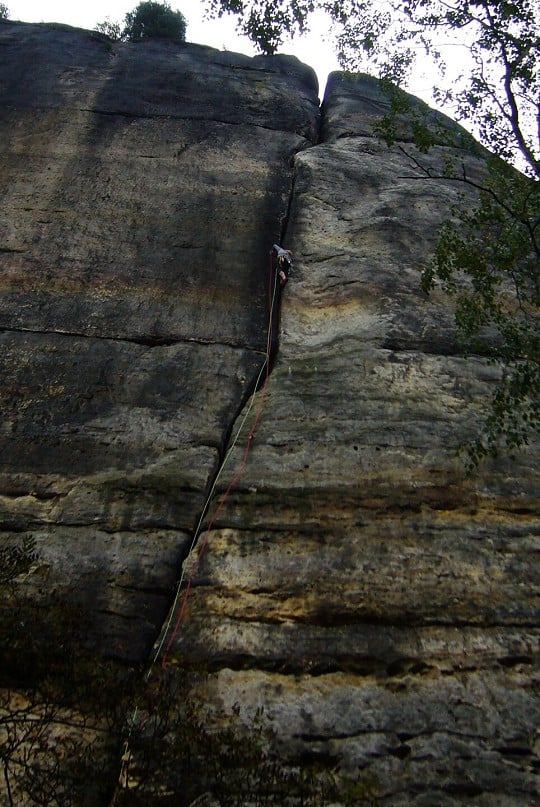
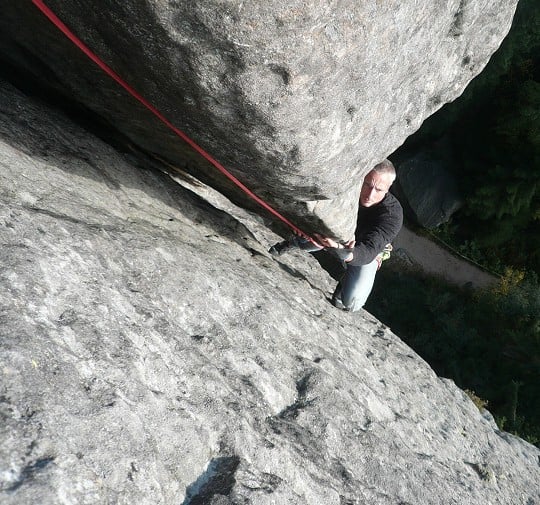
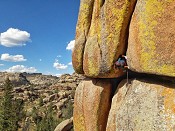

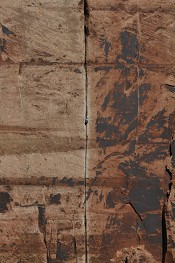








Comments
Nice.
Awesome stuff!! This is the sort of thing I love to read on UKC!!
The elbesandstein… so tantalisingly awesome sounding yet so scary also
Could you add route and tower names to the picture captions? Some are easy to recognize, but not all, and they all look great. Thanks.
Nice article Stu, thanks! Definitely one of the best places I've ever climbed!
What an adventure, particularly that coach journey...